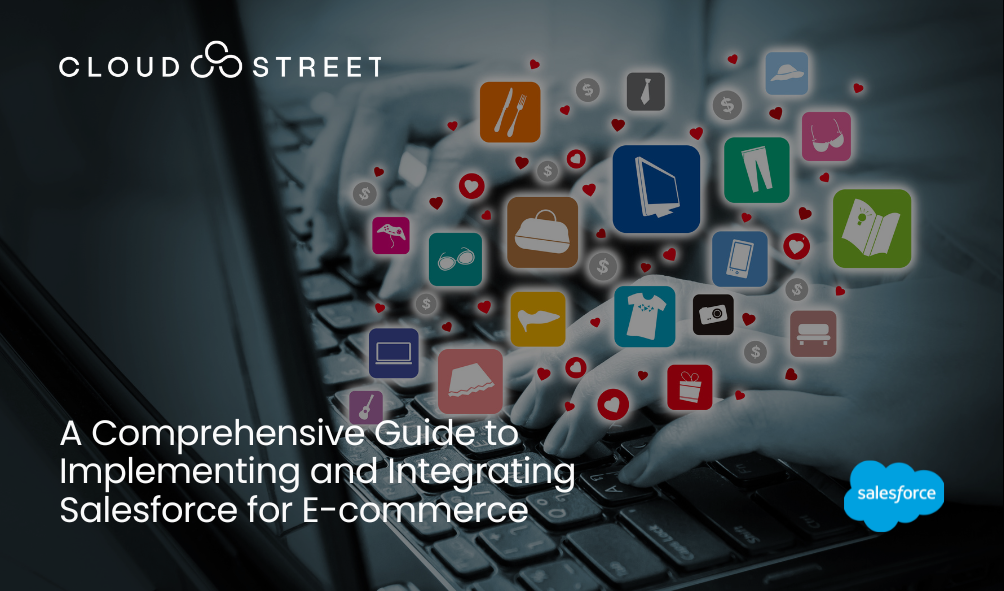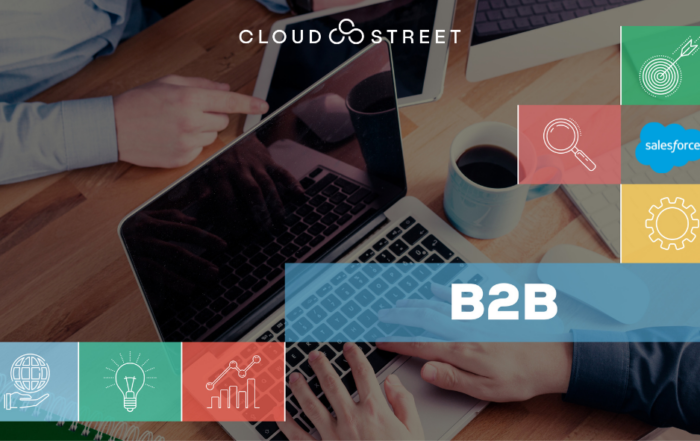A Comprehensive Guide to Implementing and Integrating Salesforce for Ecommerce

Introduction
In today’s digital age, e-commerce has become an integral part of our lives. Whether you’re buying or selling online, the convenience and reach of e-commerce are undeniable. With the rise of mobile commerce, nearly 70% of online purchases are now made via mobile devices. This shift underscores the importance of having a robust e-commerce platform, and Salesforce has emerged as a leading solution in this space.
Salesforce E-commerce Implementation
Salesforce has unified its B2C and B2B ecommerce platforms into a single, powerful solution. This integration offers numerous advantages, including a unified customer base and shared CMS components. Salesforce Commerce Cloud, formerly known as Demandware, is at the forefront of this transformation, helping businesses transition from traditional to digital commerce. The focus is not just on moving physical stores online but on creating immersive and personalized customer experiences.
Key Topics Covered
- Overview of Salesforce Implementation in E-commerce
- Sub-niches in the Salesforce E-commerce Industry
- Main Steps in Salesforce Integration with E-commerce
- Cost of Salesforce for E-commerce Implementation
- Popular Salesforce Apps for E-commerce
- Case Studies of E-commerce Salesforce Integration
- FAQs about Salesforce Implementation in E-commerce
Overview of Salesforce Implementation in E-commerce
Salesforce Commerce Cloud’s ecommerce data model is crucial for creating a connected, personalized buying experience across various touchpoints like marketing, sales, and service. This unified approach is essential for both businesses and consumers, emphasizing the importance of experience alongside products and services.
Industry-Specific Applications
- Healthcare and Life Sciences: Launch HIPAA-compliant storefronts and streamline post-purchase processes.
- Manufacturing: Modernize operations, reduce costs, and offer self-service purchasing and subscription management.
- Consumer Packaged Goods (CPG): Personalize D2C and B2B channels, support various promotions, and enhance customer service.
- Technology Industry: Adapt to market shifts, automate selling, and drive customer loyalty through subscriptions.
Sub-niches in the Salesforce E-commerce Industry
Salesforce’s adaptability allows it to cater to various sub-niches within the e-commerce industry:
- Luxury and High-End Retail: Create exclusive, personalized shopping experiences.
- Healthcare Ecommerce: Offer HIPAA-compliant solutions and efficient order management.
- Manufacturing and Automotive E-commerce: Streamline operations and provide efficient fulfillment services.
- Fashion and Apparel: Utilize customization and real-time data capabilities.
- Home and Lifestyle: Enhance customer experience with personalized product recommendations.
- Food and Beverage: Optimize supply chain management and provide consumer insights.
Main Steps in Salesforce Integration with E-commerce
- Consulting and Planning: Understand business requirements and plan strategically.
- Configuration and Customization: Tailor Salesforce to meet specific needs.
- Integrations: Ensure seamless data exchange with existing software.
- Data Migration: Carefully migrate existing data to Salesforce.
- User Training and Adoption: Train users to effectively utilize Salesforce.
- Launch: Test and launch the system for everyday use.
- Ongoing Support and Maintenance: Monitor performance and introduce updates.
- Continuous Improvement: Regularly assess and adapt to industry trends.
Cost of Salesforce for E-commerce Implementation
The cost of implementing Salesforce for e-commerce varies based on company size, complexity, and customization needs. Salesforce offers tiered pricing strategies, typically starting at 1% of the Gross Merchandise Value (GMV) for various packages like B2C Commerce, B2B Commerce, D2C Commerce, and Order Management.
Popular Salesforce Apps for E-commerce
- Groove: Sales engagement tools for automation, email tracking, and analytics.
- Cirrus Insight: Integrates Salesforce with Gmail and Outlook for efficient CRM management.
- Dooly: Sales enablement tool for note-taking and collaboration.
- ZoomInfo SalesOS: B2B marketing app with a global database of business contacts.
- PandaDoc: Document management and electronic signatures for faster deal closures.
Case Studies of E-commerce Salesforce Integration
- PacSun: Integrated social media with ecommerce to enhance customer engagement.
- Vineyard Vines: Adopted an omnichannel strategy for cohesive shopping experiences.
- Ecco: Expanded product offerings and improved sales performance with Salesforce Commerce Cloud.
Conclusion
Salesforce’s comprehensive ecommerce solutions cater to a wide range of industries and sub-niches, offering tools to enhance customer experience, streamline operations, and drive growth. By following a structured implementation process and leveraging popular Salesforce apps, businesses can achieve digital success and stay ahead in the competitive e-commerce landscape.
Discover insights that drive results - explore out latest blog posts now
Unlocking B2B Success with Salesforce Experience Cloud
Unlocking B2B Success with Salesforce Experience Cloud In today’s [...]
Future-Ready: How AI is Shaping the Mid-Market Manufacturing Landscape
Future-Ready: How AI is Shaping the Mid-Market Manufacturing Landscape [...]
Drowning in Data? Get Expert Data Entry Help for Only $9/Hour!
Data overload slowing you down? Spending too much valuable [...]


